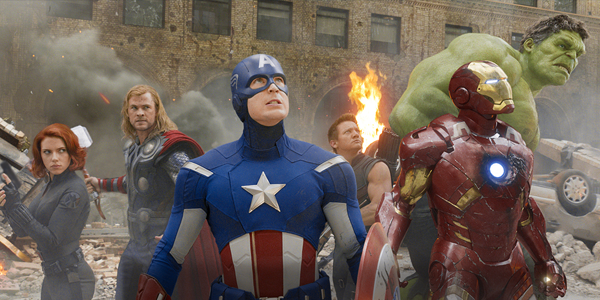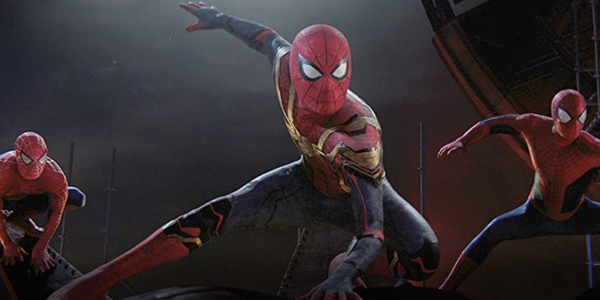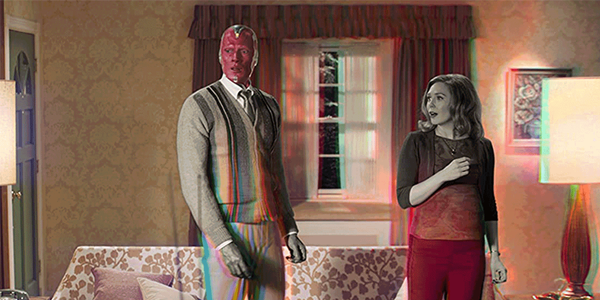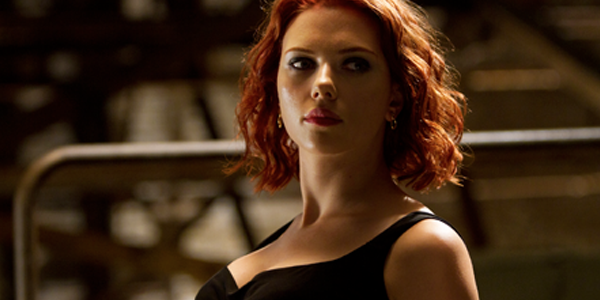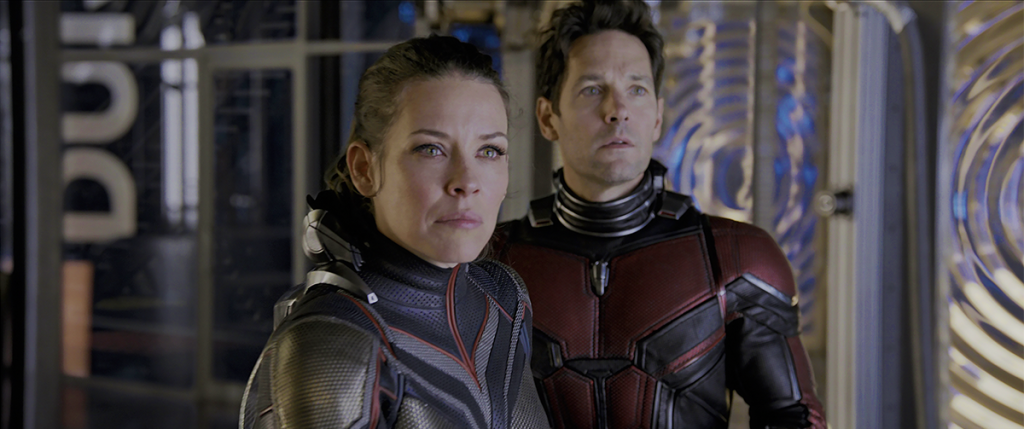
review | Ant-Man and the Wasp
the MCU on Cineluxe
related reviews
A modest, family-friendly addition to the MCU, with engaging performances by Rudd and Lilly
by John Sciacca
November 6, 2018
The Disney/Marvel team really has the formula dialed in when it comes to creating successful and enjoyable superhero movies. Through a deft mix of writing, casting, humor, big action pieces, and a 10-year storyline that both lives on its own and weaves between all films in the Marvel Cinematic Universe, the Marvel films are entertaining and re-watchable, making them fantastic for viewing at home. And while many carry a PG-13 rating, as does this film, they are very family friendly in nature.
While Ant-Man and the Wasp is technically a sequel to 2015’s Ant-Man, don’t worry that you’ll be lost if you are diving in here. The opening scene lays the groundwork for the primary plot of this film: Years ago, the original Wasp (Michelle Pfeiffer) went sub-atomic to disable a missile, and she was thought to be lost forever to the Quantum Realm. Now her husband, Dr. Hank Pym (Michael Douglas), and daughter, Hope Van Dyne (Evangeline Lilly) think there is a way to bring her back. Of course, doing so requires dealing with some shady characters to obtain illegal black-market tech, causing mayhem to ensue.
The film’s big hook is that Dr. Pym’s tech can shrink—and grow—a variety of objects, adding another layer to fight and chase scenes. These Honey, I Shrunk the Kids moments work very well, both visually and for moving the story forward, as well as providing some comedic moments.
Paul Rudd (Ant-Man/Scott Lang) carries most of the film, balancing his roles as superhero and father while under house arrest for events that happened in Captain America: Civil War. (This is all explained early on by FBI agent Jimmy Woo, played with great comedic effect by Randall Park.) Rudd is just incredibly likable and easy to watch, similar—but far less foul-mouthed—to Ryan Reynold’s Deadpool, with an ability to organically inject humor into scenes without making it feel forced. Lilly is also fantastic as the Wasp, demonstrating she’s picked up some fierce fighting skills since leaving the island. (That’s a Lost reference, for those who missed it.)
The movie was filmed on a variety of Red and Arri cameras at resolutions ranging from 3.4K to 8K, while the home release comes from a 2K digital intermediate. This means it doesn’t mine every bit of resolution possible but still looks pretty terrific. A great example is the early scene where Jimmy Woo explains why Lang is under house arrest. He’s wearing a shirt with incredibly fine pinstripes that are almost a 1:1 4K resolution test. Other scenes reveal the pebbled texture and detail in Ant-Man and Wasp’s uniforms. The film’s color palette is mostly muted and natural, with a more restrained HDR pass. But the image still pops when it needs to—for example when heading into the Quantum Realm, or the computer screens in Dr. Pym’s lab. Black levels are also deep and noise-free, with lots of shadow detail.
There has been quite a bit of angst over recent Disney/Marvel home releases with their sub-standard, heavily compressed audio mixes. In fact, a petition was started to get Disney to change the audio quality in future releases, currently with over 1,000 supporters. I’m happy to say that the Dolby Atmos audio quality on Ant-Man and The Wasp is far improved over recent D/M fare. Dialogue is clear and understandable throughout, but more importantly to luxury home cinema owners, the sound mix is far more dynamic, with the overhead speakers used wisely and frequently throughout. This height layer is used for creating ambience and space in the scene, as well as creating directional cues—for example, The Wasp and other insects zipping around the room. If I had one complaint about the mix, it would be that they were a little light-handed in the deep-bass department, with moments—such as during a big chase and fight scene near the end—that would have benefitted from some extra dBs in the LFE channel.
Two scenes that really show off the strength of the audio mix are “Lost in the Quantum Realm” at just over 11 minutes in, as well as Lang’s first visit to Dr. Pym’s lab at the 16-minute mark. “Lost” has audio that swirls and shifts all around the room, simulating Lang’s travel through the realm, with voices mixed in all channels to simulate a dream state. The lab scene wonderfully uses subtle cues like buzzing fluorescent lights, flying and crawling insects, and cavernous echoes to place you smack in the middle of the screen environment.
Oh, and without spoiling anything, definitely watch through the credits as the team does a fantastic job of tying this film into the Infinity War timeline. The film also includes a host of extra features including a director’s commentary, a variety of making-of featurettes, outtakes, and deleted scenes.
Probably the most experienced writer on custom installation in the industry, John Sciacca is co-owner of Custom Theater & Audio in Murrells Inlet, South Carolina, & is known for his writing for such publications as Residential Systems and Sound & Vision. Follow him on Twitter at @SciaccaTweets and at johnsciacca.com.
© 2025 Cineluxe LLC


